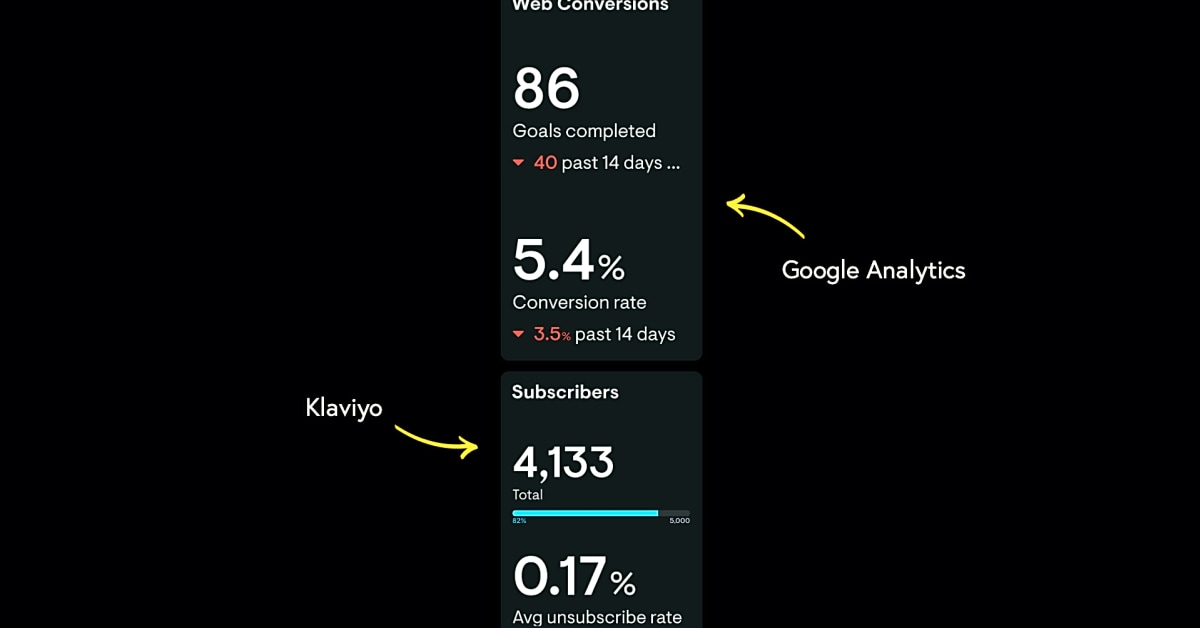In today’s digital age, email marketing has become a crucial aspect of any successful content marketing strategy. With the ability to reach a wide audience and track performance metrics, it has become an essential tool for businesses of all sizes. However, the effectiveness of email marketing campaigns depends heavily on measuring and tracking performance. Without proper measurement, it is impossible to determine the success of your email marketing efforts and make necessary improvements.In this article, we will dive into the world of measuring and tracking email marketing performance. We will explore various techniques and tools that can help you analyze and optimize your campaigns. Whether you are a beginner or an experienced marketer, this guide will provide valuable insights to improve your email marketing game.So, if you are ready to take your email marketing to the next level, let’s begin our journey into the world of measuring and tracking email marketing performance. Whether you are looking to increase open rates, click-through rates, or conversions, this article has got you covered. So, grab a cup of coffee and get ready to learn how to effectively measure and track your email marketing performance.
Email marketing has become an integral part of any successful digital marketing strategy. It allows businesses to directly reach their target audience and build relationships with potential customers. However, simply sending out emails is not enough. To truly see the impact of your email marketing efforts, it’s crucial to measure and track its performance.
Tracking the performance of your email marketing campaigns provides valuable insights into what is working and what needs improvement. It allows you to make data-driven decisions and optimize your strategies for better results. In this article, we will cover everything you need to know about measuring and tracking your email marketing performance.
The Importance of Email Marketing
Email marketing is one of the most effective ways to communicate with customers and promote products or services. According to a survey by DMA, for every $1 spent on email marketing, businesses can expect an average return of $42.
In addition to its high ROI, email marketing also allows for targeted and personalized messaging, making it more likely to resonate with recipients. It also has a wider reach compared to other forms of marketing, with billions of people using email worldwide.
However, with the increasing competition in the digital landscape, it’s important to not only send out emails but also track their performance to ensure maximum effectiveness.
Key Metrics to Track
There are several key metrics that can help you measure the success of your email marketing efforts.
Open Rates: This refers to the percentage of recipients who opened your email. A high open rate indicates that your subject line and preview text were engaging enough to grab the recipient’s attention.
Click-through Rates: This measures the number of people who clicked on a link within your email. A high click-through rate shows that your content was compelling enough to drive action.
Conversion Rates: This is the percentage of recipients who completed a desired action, such as making a purchase or filling out a form, after clicking through your email. A high conversion rate indicates that your email effectively persuaded recipients to take action.
By tracking these metrics, you can identify which areas of your email marketing need improvement and make necessary adjustments.
Tools for Tracking Email Marketing Performance
There are various tools and software available that can help you track your email marketing performance more efficiently. Some popular options include Google Analytics, Mailchimp, and Constant Contact.
These tools provide detailed reports on key metrics and allow you to segment your audience, A/B test different email variations, and automate your campaigns for better performance.
Tips for Process Improvement
In addition to tracking metrics and using tools, there are other ways to improve your email marketing performance. As an operational leader, it’s important to understand how to manage and build a strong team to support your email marketing efforts.
One tip is to establish clear goals and objectives for your email marketing campaigns. This will help guide your team in creating effective strategies and measuring success.
Another tip is to regularly review and analyze your email marketing data to make data-driven decisions. This will allow you to identify areas for improvement and optimize your strategies for better results.
Furthermore, it’s important to continuously educate yourself and stay updated on industry trends and best practices for email marketing. This will help you stay ahead of the competition and continuously improve your strategies.
In Conclusion
Measuring and tracking your email marketing performance is crucial for any business looking to improve their digital marketing efforts. By understanding the importance of email marketing, tracking key metrics, utilizing tools, and implementing process improvement tips, you can become a better leader in your business operations and see significant growth in your email marketing results.
Tips for Improving Organizational Efficiency through Email Marketing
Implementing process improvement techniques can greatly enhance your email marketing performance. By streamlining and optimizing your email marketing processes, you can increase efficiency and effectiveness, leading to better overall organizational performance.
Tools and Software for Tracking Email Marketing Performance
As an operational leader, you understand the importance of effectively managing and building a strong team. However, when it comes to measuring and tracking your email marketing performance, the process can become overwhelming and time-consuming. Luckily, there are tools and software available that can streamline this tracking process for you.
One helpful tool is Google Analytics, which can provide valuable insights into your email marketing campaigns. By setting up custom tags and tracking links, you can easily track clicks, conversions, and overall campaign success.
Another useful tool is MailChimp’s reporting feature, which allows you to track open rates, click-through rates, and subscriber engagement. With its user-friendly interface and customizable reports, MailChimp makes it easy to understand and analyze your email marketing performance.
For more advanced tracking capabilities, consider using a marketing automation platform like HubSpot or Marketo. These platforms offer comprehensive tracking features such as lead scoring, A/B testing, and detailed campaign analytics.
Overall, discovering helpful tools and software that can streamline your tracking process is essential for improving organizational efficiency and decision making in your email marketing efforts. Take advantage of these resources to get a better understanding of your performance and make data-driven decisions for future campaigns.
Becoming a Better Leader through Email Marketing Strategies
As an operational leader, it’s important to not only understand how to effectively manage and build a strong team, but also to constantly improve and enhance your leadership skills. One often overlooked avenue for developing these skills is through email marketing strategies.
Email marketing requires a combination of technical know-how and creativity, making it the perfect platform for leaders to hone their skills. By using effective email marketing techniques, leaders can improve their communication, decision making, and organizational efficiency.
First and foremost, email marketing relies heavily on clear and concise communication. As a leader, being able to convey your message effectively is crucial in building trust and rapport with your team. By crafting compelling subject lines and concise yet informative email content, you can practice and improve your communication skills.
Furthermore, email marketing also requires strategic decision making. Leaders must carefully plan and execute their email campaigns, considering factors such as target audience, timing, and desired outcome. By practicing this type of decision making in a low-risk environment like email marketing, leaders can develop their critical thinking skills and become more confident in their decision making abilities.
Lastly, email marketing can also help improve organizational efficiency. With the ability to track and measure performance metrics, leaders can gain valuable insights into the effectiveness of their email campaigns. This data can then be used to make data-driven decisions, leading to improved efficiency and productivity within the team.
In conclusion, using effective email marketing techniques can greatly enhance leadership skills. By constantly practicing and refining communication, decision making, and organizational efficiency through email marketing, leaders can become more effective in their roles and drive success for their teams.
Key Metrics to Track for Effective Email Marketing Performance
When it comes to email marketing, tracking and measuring performance is crucial for success. By monitoring the right metrics, you can gain valuable insights into your audience, campaign effectiveness, and overall performance. Here are the key metrics you should be tracking for effective email marketing performance:
- Open Rate: This metric measures the percentage of subscribers who opened your email. A high open rate indicates that your subject line and email content were enticing enough to catch your audience’s attention.
- Click-Through Rate (CTR): This metric measures the percentage of subscribers who clicked on a link within your email. A high CTR indicates that your email content was engaging and relevant enough to drive action.
- Conversion Rate: This metric measures the percentage of subscribers who completed a desired action, such as making a purchase or filling out a form. A high conversion rate indicates that your email was successful in driving conversions.
- Bounce Rate: This metric measures the percentage of emails that were not delivered to subscribers’ inboxes. A high bounce rate can indicate issues with your email list or email deliverability.
- List Growth Rate: This metric measures the rate at which your email list is growing. A healthy list growth rate is essential for maintaining a strong and engaged audience.
By regularly monitoring these metrics, you can gain insights into how your email marketing efforts are performing and make data-driven decisions to improve your campaigns. For example, if you notice a low open rate, you can experiment with different subject lines to see what resonates with your audience. Or, if you have a high bounce rate, you can clean up your email list to ensure better deliverability. Use these metrics to your advantage and continuously track and analyze them to optimize your email marketing performance.
Why Email Marketing is Essential for Operational Leaders
Email marketing has become a crucial tool for businesses in today’s digital landscape. It allows companies to directly communicate with their target audience, build brand awareness, and drive business success. Operational leaders, in particular, can greatly benefit from incorporating email marketing into their strategies.
One of the main reasons why email marketing is essential for operational leaders is because it helps them understand their audience better. By analyzing email open rates, click-through rates, and other metrics, they can gain valuable insights into their customers’ preferences and behaviors. This information can then be used to make more informed decisions and improve organizational efficiency.
Email marketing also plays a crucial role in building strong relationships with customers. By regularly sending personalized and relevant content to their email list, operational leaders can establish trust and credibility with their audience. This can lead to increased customer loyalty and retention, ultimately driving business success.
By now, you should have a better understanding of how to measure and track your email marketing performance as an operational leader. Remember to regularly review your metrics, make data-driven decisions, and continuously improve your strategies for optimal results. With the right tools and techniques, you can take your email marketing efforts to the next level and drive business success.







